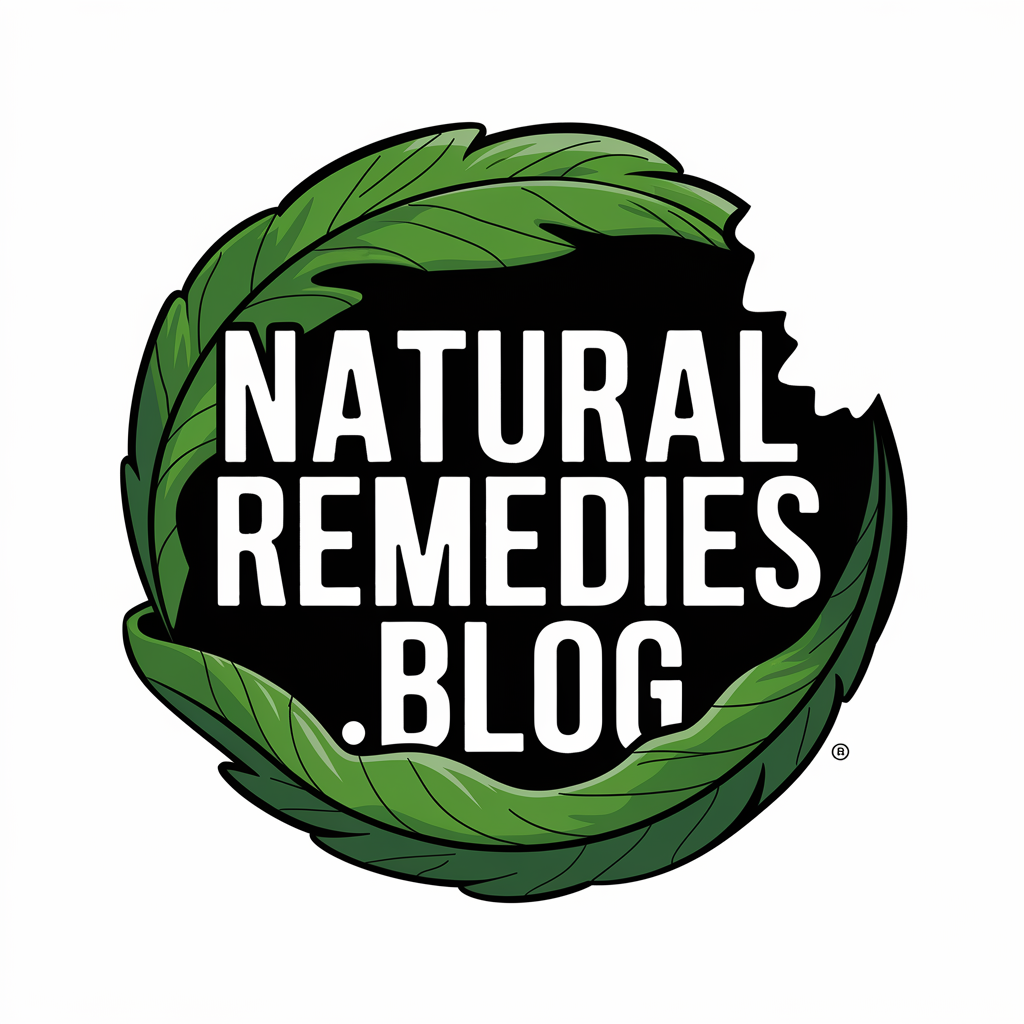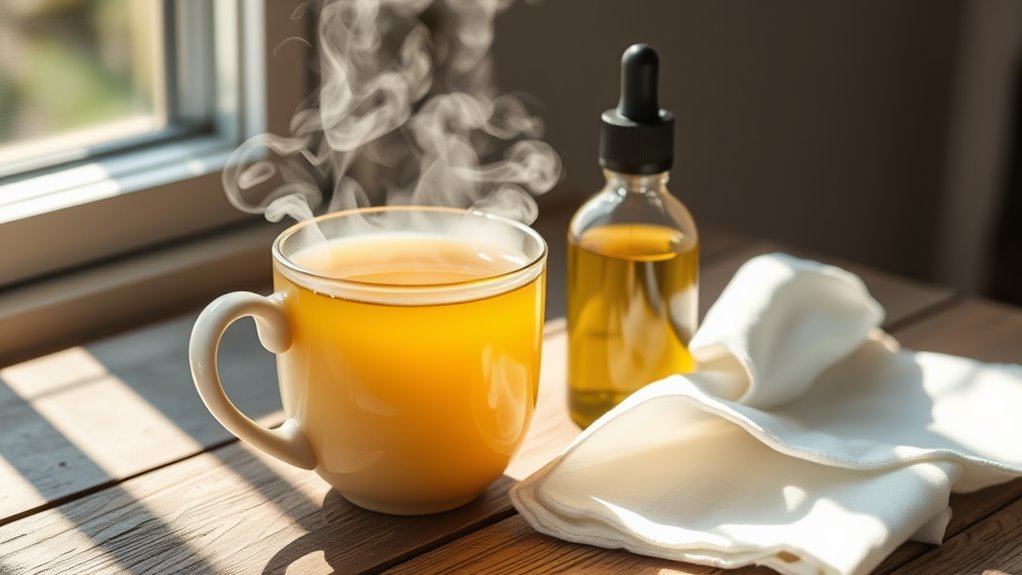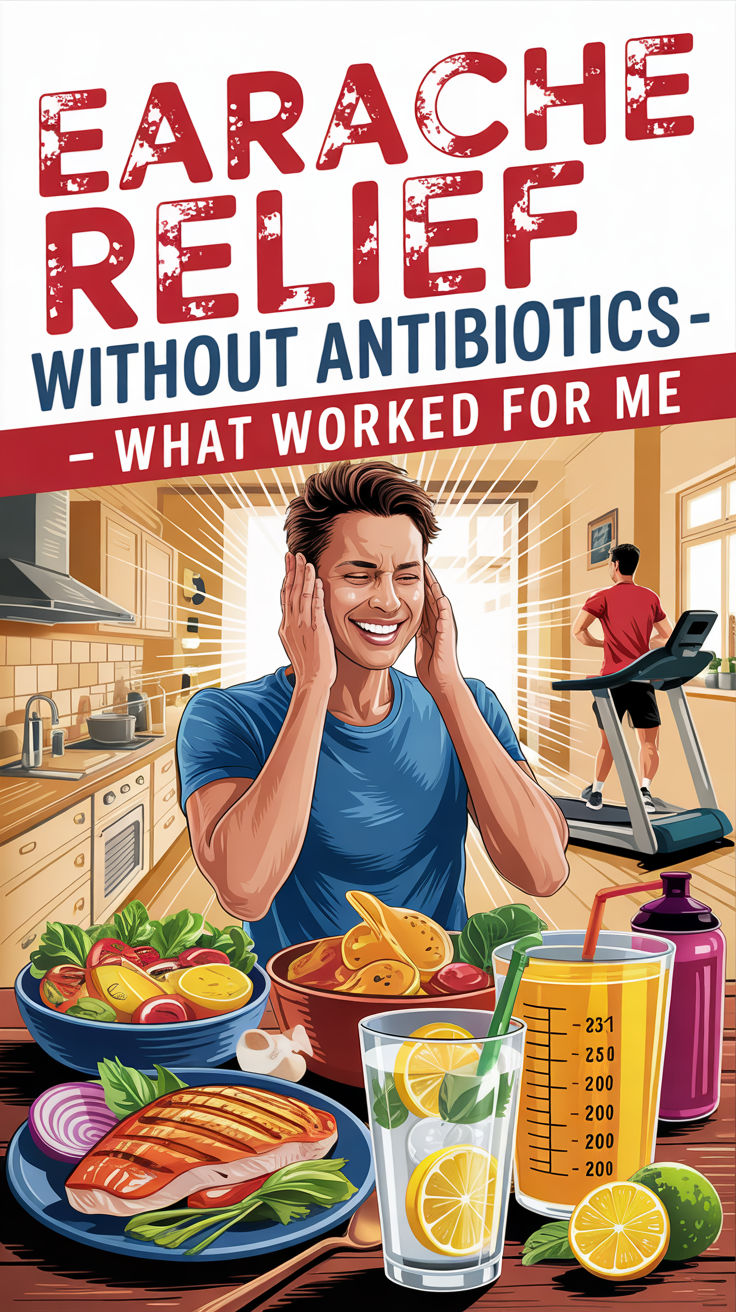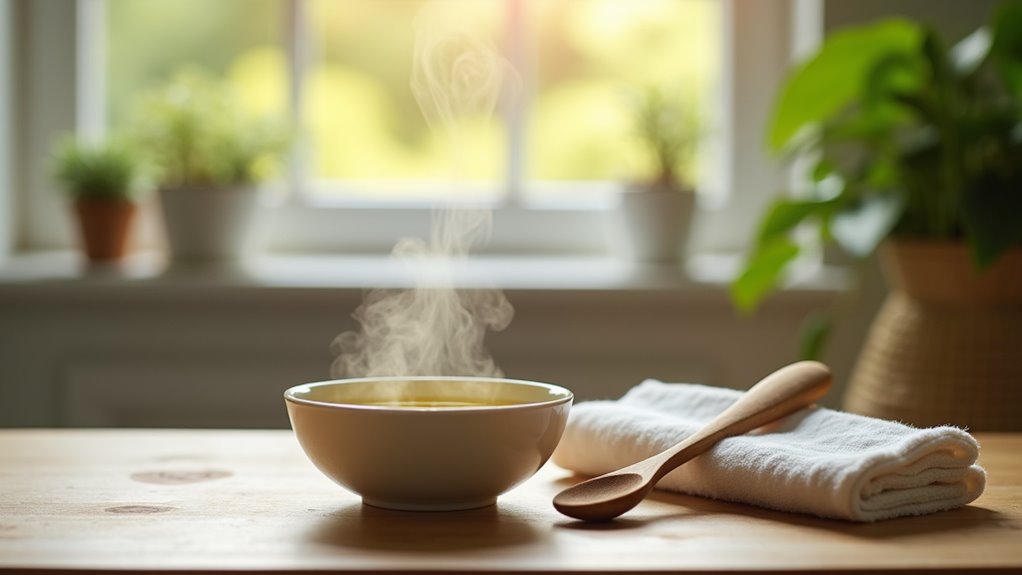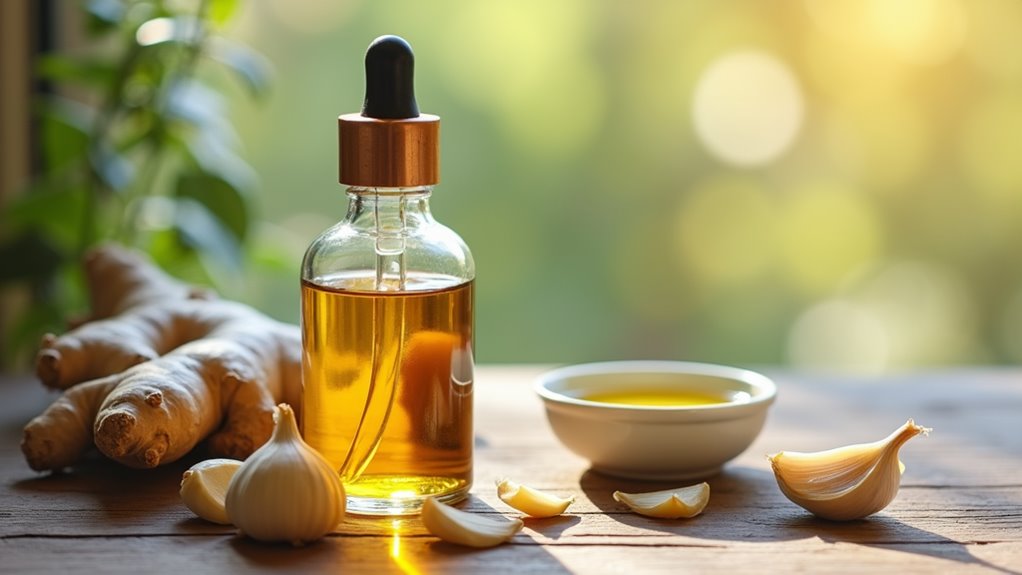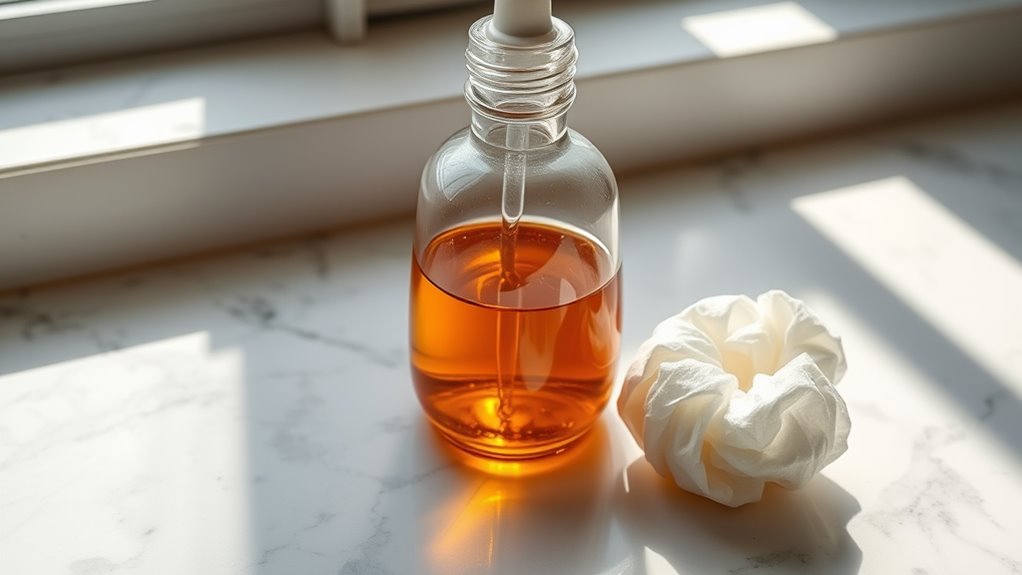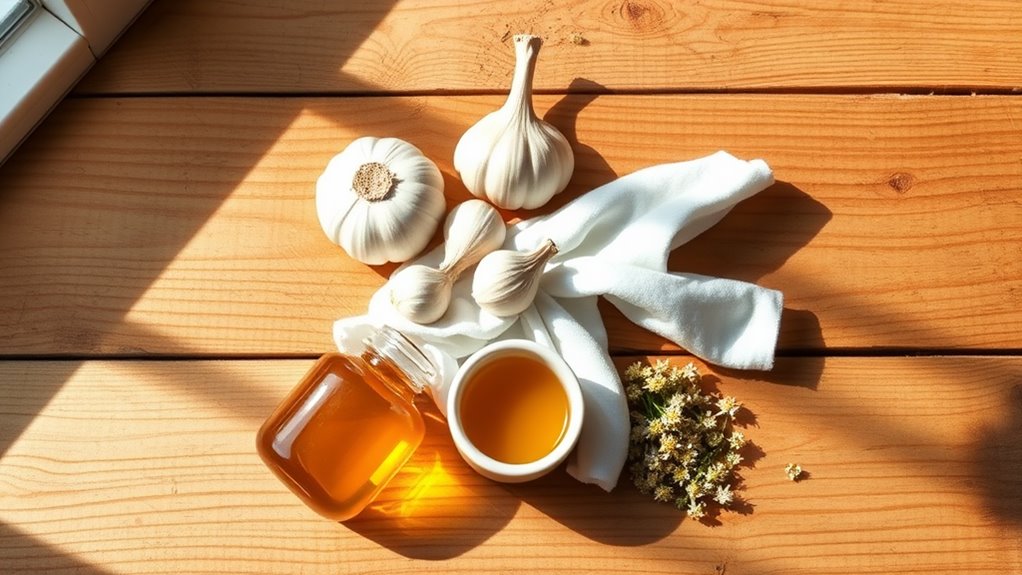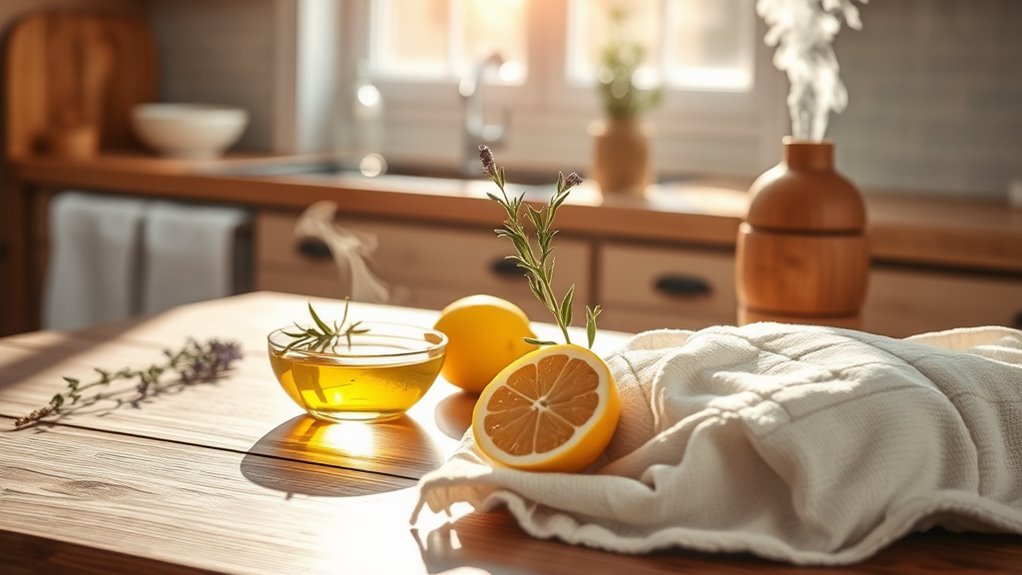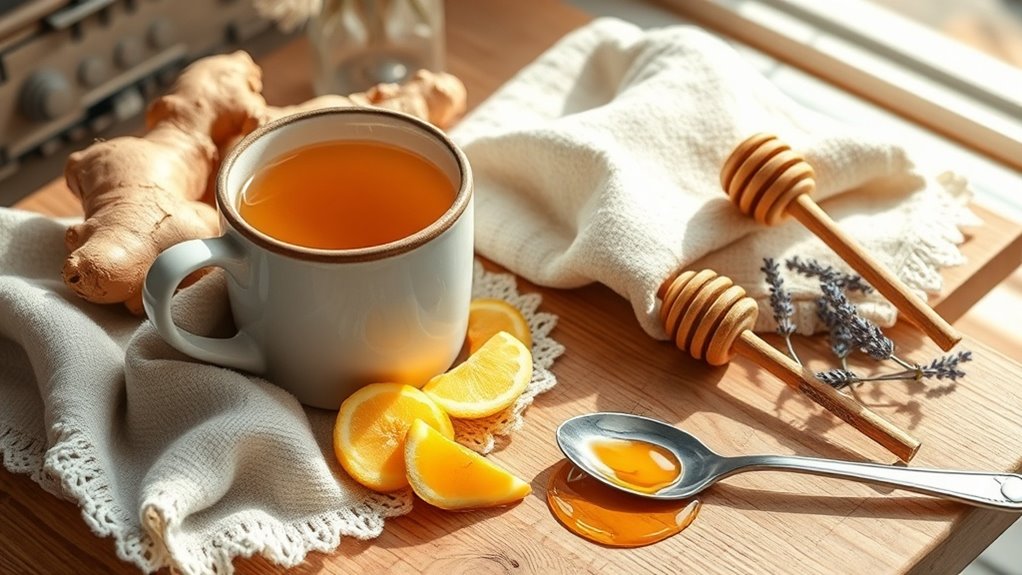Earache Relief Without Antibiotics – What Worked for Me
You can effectively manage otitis media symptoms through targeted natural interventions and over-the-counter solutions. Apply warm olive oil drops or diluted tea tree oil topically while maintaining elevated head positioning at 30-45 degrees for optimal drainage. Alternating thermotherapy with cold and warm compresses for 20-minute intervals reduces inflammation and enhances circulation. Incorporating anti-inflammatory nutrients and practicing auricular hygiene techniques provides systemic support. The following evidence-based strategies offer comprehensive relief protocols.
Key Takeaways
-
Using warm olive oil drops in the affected ear provided immediate pain relief and helped reduce inflammation naturally.
-
Alternating between warm and cold compresses for 20-minute intervals significantly decreased pain and swelling.
-
Sleeping with my head elevated at 30-45 degrees improved drainage and reduced pressure in the ear canal.
-
Taking ibuprofen for pain management while applying ginger-turmeric tea compresses helped ease discomfort without antibiotics.
-
Regular use of a humidifier prevented ear canal dryness and helped maintain proper moisture balance.
My Journey With Recurring Earaches
My battle with recurring earaches began after a particularly severe case of otitis media that developed complications.
The chronic inflammation of my middle ear led to persistent eustachian tube dysfunction, making me susceptible to frequent infections. I often found myself dealing with earache triggers like seasonal allergies and sinus pressure that only exacerbated my condition.
Despite trying various earache remedies adults commonly use, including over-the-counter analgesics and warm compresses, the discomfort persisted.
Through consultations with otolaryngologists, I learned my anatomical predisposition and swimming habits were significant contributing factors.
The combination of natural water exposure and inadequate ear hygiene practices had created a perfect environment for recurring otitis externa.
This realization prompted me to explore non-antibiotic interventions and lifestyle modifications, focusing on prevention rather than just treating symptoms.
Understanding these underlying causes became crucial in managing my condition effectively. I made sure to carefully monitor my symptoms and seek medical attention whenever the pain lasted more than three days to prevent serious complications.
Natural Remedies From My Kitchen
When considering natural alternatives to conventional earache treatments, your kitchen likely contains several evidence-based therapeutic options.
You’ll find that ginger and turmeric possess potent anti-inflammatory compounds that can mitigate otic discomfort when consumed as tea or applied topically. Additionally, natural remedies for earaches, such as ginger and turmeric, work with the body’s healing processes to reduce inflammation.
Garlic’s antimicrobial properties make it particularly effective when infused in olive oil, though you must never insert it directly into the auditory canal.
For localized pain management, you can create therapeutic compresses using items from your pantry. Hydrogen peroxide drops can help dissolve and remove excess earwax buildup that may be contributing to discomfort.
Alternate between applying warm cotton compresses to enhance circulation and cold compresses with ice to reduce inflammation. Moreover, maintaining proper auricular hygiene is crucial to prevent infections and ensure effective treatment.
While implementing these remedies, maintain proper auricular hygiene and elevated head positioning during rest periods to optimize drainage and minimize tympanic pressure.
Over-the-Counter Solutions That Helped
When you’re experiencing otic discomfort, over-the-counter analgesics like acetaminophen or ibuprofen can effectively manage pain and reduce inflammation of the external and middle ear. You’ll find that both medications work through different mechanisms – acetaminophen primarily affects pain perception in the central nervous system, while ibuprofen reduces prostaglandin production to decrease inflammation. Applying a cold pack can provide additional immediate relief as well. For localized relief, you can alternate between cold compresses to reduce inflammation in the first 24 hours and warm compresses thereafter to improve circulation and lymphatic drainage around the affected ear. Additionally, ear drop treatments from Walgreens can provide quick relief, with several affordable options priced between $7.99 and $20.99.
Pain Relief Medicine Options
Over-the-counter pain relievers offer significant relief for earache symptoms, with ibuprofen and acetaminophen standing as the primary therapeutic options. You’ll find these medications particularly effective in managing both pain and inflammation associated with ear infections.
When selecting your analgesic, consider key demographic factors.
If you’re treating a child under 6 months, avoid ibuprofen and opt for acetaminophen.
For individuals under 19, aspirin is contraindicated due to the risk of Reye’s syndrome.
You may alternate between acetaminophen and ibuprofen for enhanced pain management, following precise dosage guidelines. Most patients experience symptom improvement within days while using these medications.
While these medications provide symptomatic relief, it’s essential to monitor your condition. Should symptoms persist or intensify, consult a healthcare provider for a comprehensive evaluation and personalized treatment recommendations.
Compresses: Hot vs. Cold
Beyond pain medications, hot and cold compresses offer targeted relief for acute ear discomfort through distinct physiological mechanisms.
Hot compresses promote vasodilation and muscle relaxation, facilitating drainage and reducing throbbing sensations.
Cold therapy, conversely, induces vasoconstriction and diminishes inflammation while numbing pain receptors. Over-the-counter pain relievers can complement compress therapy to maximize pain relief.
- Apply a warm, damp washcloth for 10-20 minutes to stimulate prostaglandin-mediated circulation and enhance fluid drainage
- Position an insulated cold compress against the affected ear for temporary analgesia through reduced nerve signal transmission
- Alternate between temperatures every 30 minutes, allowing each modality’s therapeutic benefits while monitoring skin response
For optimal results, maintain proper temperature control and limit applications to 3-4 daily sessions.
Discontinue use if symptoms worsen, and seek medical evaluation if discomfort persists beyond 72 hours.
Sleep and Rest Strategies for Relief
Getting quality sleep with an earache requires strategic positioning and environmental modifications to promote healing and reduce discomfort.
Position your head elevated while sleeping to facilitate fluid drainage and decrease ear canal pressure.
You’ll want to lie on your unaffected ear or sleep on your back with multiple pillows to maintain optimal alignment.
Don’t sleep on your stomach, as this increases middle ear pressure.
Create an optimal sleep environment by using a humidifier to prevent ear canal dryness and maintaining a cool room temperature between 60-67°F.
Consider using a contoured memory foam pillow for proper elevation without cervical strain.
Before bed, apply a warm compress, perform a nasal saline rinse, and consider taking an OTC anti-inflammatory. These interventions support Eustachian tube function and minimize nocturnal discomfort, especially since ear infections can worsen symptoms during sleep.
Pressure-Relieving Techniques That Work
Effective ear pressure management combines multiple physiological approaches to restore equilibrium within the middle ear and Eustachian tubes.
You’ll achieve optimal results by implementing targeted interventions that facilitate pressure equalization and promote drainage of middle ear fluid.
-
Execute the Valsalva maneuver by occluding your nostrils while performing gentle exhalation, directing air through the Eustachian tubes to equalize tympanic membrane pressure.
-
Utilize thermotherapy alternating between cold compresses for inflammation reduction and warm compresses for myofascial relaxation, applying for 20-minute intervals.
-
Incorporate positional drainage techniques by maintaining head elevation at 30-45 degrees, complemented by controlled temporomandibular movements to facilitate Eustachian tube patency.
Notably, warm olive oil drops can also help reduce inflammation and discomfort, serving as a natural remedy alongside these techniques.
These evidence-based techniques, when properly executed, can provide significant otologic pressure relief without pharmaceutical intervention.
Essential Lifestyle Changes for Recovery
While managing acute otitis media and associated otalgia requires targeted interventions, implementing comprehensive lifestyle modifications can significantly accelerate your recovery process and reduce symptom severity.
You’ll need to maintain optimal hydration levels and incorporate anti-inflammatory nutrients, particularly omega-3 fatty acids and immunomodulating micronutrients like vitamin C and zinc.
Position your affected ear superiorly during sleep to facilitate eustachian tube drainage.
Regular cardiovascular exercise enhances peripheral circulation and immunological function, while stress reduction techniques such as meditation and yogic practices help modulate your inflammatory response.
You’ll want to avoid exposure to environmental irritants, particularly cigarette smoke, which can exacerbate upper respiratory inflammation.
Remember to maintain proper auricular hygiene without introducing foreign objects into the external auditory canal.
Additionally, staying attentive to symptoms like persistent ear pain can help you seek timely medical advice if needed.
Alternative Therapies Worth Trying
Several evidence-based alternative therapies can provide significant relief from otalgia without relying on conventional antibiotics. When applied correctly, topical interventions like diluted tea tree oil and warmed olive oil can help mitigate acute symptoms through their antimicrobial and anti-inflammatory properties. Physical therapies, including cervical manipulation and targeted massage, may alleviate auricular pressure by addressing musculoskeletal contributors to ear discomfort. Naturopathic preparations containing herbal extracts in an olive oil base demonstrate efficacy in reducing otic inflammation and pain. Application of cold compresses for acute inflammation, alternating with warm compresses to enhance local circulation, is also recommended. Additionally, incorporating anti-inflammatory nutrients through dietary modifications, particularly omega-3 fatty acids and probiotics, to support systemic immune function can enhance overall well-being.
Daily Habits to Prevent Future Earaches
You’ll need to maintain scrupulous ear canal dryness and employ moisture-control practices after aquatic exposure to prevent otitis media and externa.
It’s essential to minimize your exposure to environmental irritants, including cigarette smoke and harsh chemical products that can trigger inflammation of the external auditory canal and middle ear space.
Building your immune system through proper nutrition, adequate rest, and potentially beneficial practices like extended breastfeeding for infants can significantly reduce your susceptibility to pathogenic infections affecting the ear. Additionally, staying current with vaccinations during flu season can help lower the risk of illnesses that may contribute to ear pain.
Keep Ears Dry Always
Maintaining optimal ear canal moisture balance requires consistent daily habits to prevent future earaches and infections.
After bathing or swimming, tilt your head to facilitate drainage of any trapped water, which can disrupt the ear canal’s protective lipid barrier.
Using a soft towel, gently dry your external auditory canal to prevent moisture accumulation that could lead to otitis externa.
- Apply water-resistant earplugs or swim caps during aquatic activities to maintain the ear canal’s natural moisture equilibrium
- Position your head at a 45-degree angle when showering to prevent high-pressure water from entering the external auditory meatus
- Consider using a humidifier in dry climates to support optimal moisture levels, while avoiding excessive environmental humidity that could promote bacterial growth
Limit Irritant Exposure
Protecting your ears from environmental irritants plays a crucial role in preventing future earaches and maintaining optimal auditory health.
You’ll need to minimize exposure to tobacco smoke, which can inflame the nasopharyngeal tissues and increase susceptibility to infections.
Install air purifiers in your living spaces to reduce airborne allergens like pollen, dust mites, and pet dander that can trigger inflammatory responses in the ear canal and Eustachian tubes.
When you’re in polluted environments, wear appropriate protective gear to shield your respiratory system.
Consider using a humidifier to maintain optimal moisture levels, preventing irritation of the ear canal’s epithelial lining.
You’ll also want to manage your indoor environment by regularly cleaning surfaces, changing air filters, and maintaining proper ventilation to reduce accumulation of potential irritants.
Build Immune System Strength
A robust immune system serves as your primary defense against recurring ear infections and associated complications.
Enhancing your immunological function through scientifically-proven methods can significantly reduce your susceptibility to otitis media and other auricular infections.
You’ll need to integrate specific lifestyle modifications that support optimal immune response.
- Maintain balanced gut microbiota through regular consumption of fermented foods and probiotic supplements containing Lactobacillus Rhamnosus strains, which stimulate cytokine production
- Implement consistent sleep hygiene protocols and stress management techniques to regulate cortisol levels and support lymphocyte production
- Incorporate immune-modulating foods like allicin-rich garlic and gingerols from fresh ginger root, while ensuring adequate hydration and nutrient-dense whole food consumption
These evidence-based interventions can strengthen your immunological barriers and reduce pathogenic colonization in the Eustachian tubes.
References
- https://www.webmd.com/cold-and-flu/ear-infection/ear-pain-home-treatment
- https://www.healthpartners.com/blog/ear-infection-treatment/
- https://www.healthline.com/health/11-effective-earache-remedies
- https://giving.massgeneral.org/stories/treating-ear-infections-without-antibiotics
- https://www.medicalnewstoday.com/articles/312634
- https://www.pennmedicine.org/for-patients-and-visitors/patient-information/conditions-treated-a-to-z/chronic-ear-infection
- https://www.bmj.com/content/354/bmj.i3917
- https://my.clevelandclinic.org/health/symptoms/earache-ear-pain
- https://www.aafp.org/pubs/afp/issues/2018/0101/p20.html
- https://pmc.ncbi.nlm.nih.gov/articles/PMC3765573/
